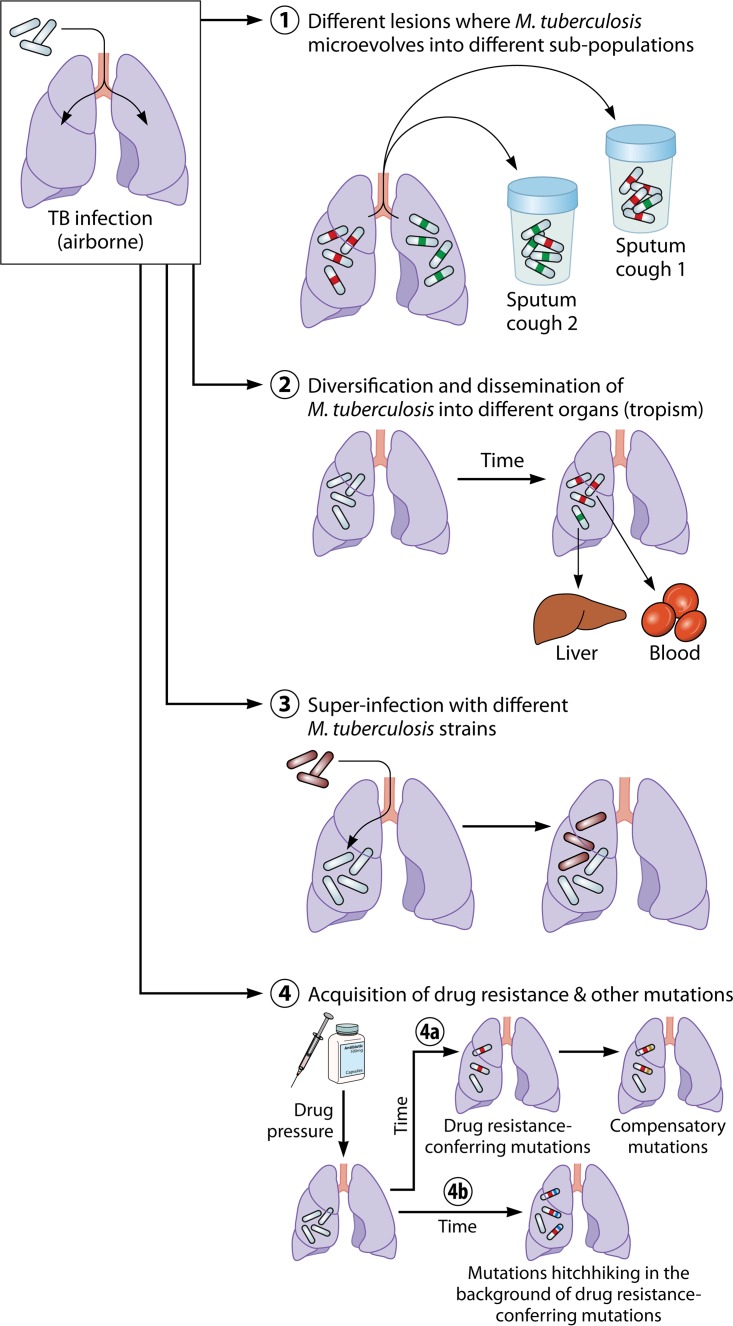FIG 1.
Trajectory of within-host microevolution of M. tuberculosis. Four scenarios of microevolution of M. tuberculosis within a host are presented as follows. (Scenario 1) M. tuberculosis cells present in different lesions in the lung microevolve into distinct subpopulations through the acquisition of different single nucleotide variants (SNVs) (green and red). The different lesions might contribute bacilli to the sputum in different proportions, leading to the detection of different variants from distinct subpopulations. (Scenario 2) M. tuberculosis strains evolve in the lung and are subsequently disseminated into different organs, where they further evolve. Samples from different anatomical sites therefore harbor distinct M. tuberculosis subpopulations. (Scenario 3) An infected host is superinfected with a different but very similar M. tuberculosis strain, leading to the detection of different M. tuberculosis populations in subsequent samples. As the different M. tuberculosis strains are phylogenetically very similar, it is difficult to distinguish between within-host microevolution and exogenous reinfection with a new M. tuberculosis strain. (Scenario 4) Drug pressure leads to the acquisition of drug resistance-conferring mutations (red). (Scenario 4a) These mutations can lead to a loss of fitness which is subsequently restored through the acquisition of compensatory mutations (yellow). (Scenario 4b) Additional mutations might emerge in concert with the drug resistance-conferring mutations through genetic linkage to the latter (i.e., hitchhiking SNVs) (blue).

